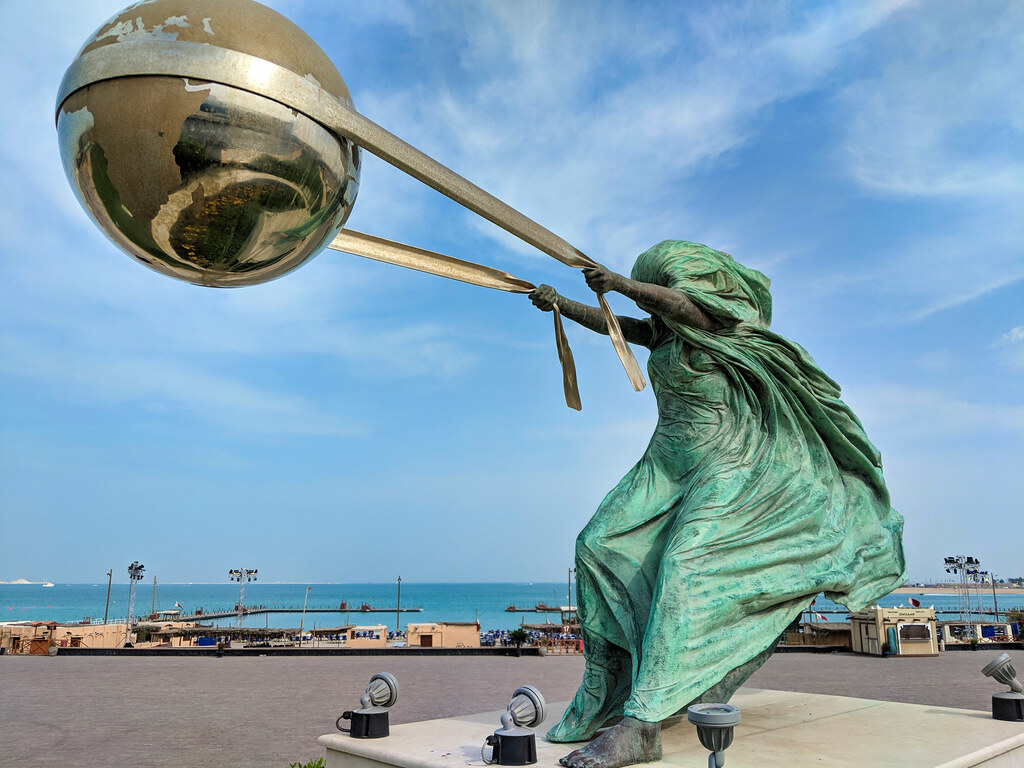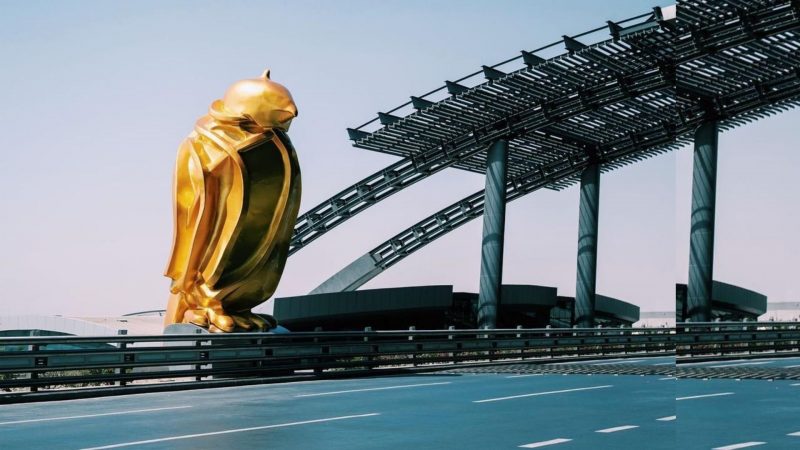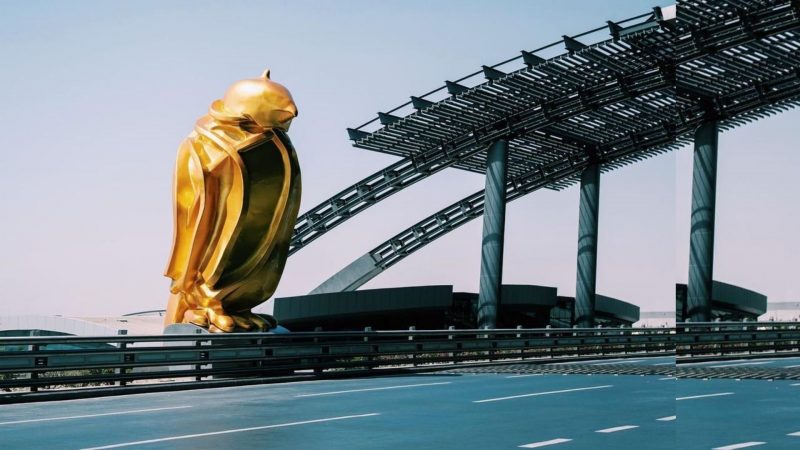
“I want my monumental works to have even more of an effect on the public. The moment the sculpture enters the common space, it is no longer mine. My ownership ceases and it becomes the people’s.”
– Lorenzo Quinn
The installation of “The Force of Nature II” is a series of phenomenal sculptures by Lorenzo Quinn, but the one in Qatar was installed in October 2011. This installation is crafted from bronze and aluminum, depicting Mother Nature holding on to our world as well as beautifully illustrating the balance between the Earth and its navigator. As per the artistic intentions, Lorenzo Quinn has deliberately created this sculpture as a dedication to Mother Nature, but most importantly it serves as a reminder of nature’s power and humanity’s responsibility to Earth.
This sculpture is a wonderful personification of what an Indian historian, Ramachandra Guha, who presented a critique on wilderness in his essay “Radical American Environmentalism and Wilderness Preservation”. It is because Guha strongly claims that the emphasis on wilderness is more or less dangerous especially in the Third World, as all these conservation projects of the ‘elites’ or even other international organizations tend to harm or at least threaten the lives of the people as well as pose collateral damage to other species. Thus, this clearly shows that even though we are trying our best to preserve the wilderness or at least to maintain a balance between the Earth and its navigator, there are still those who are interested more in “enjoying the material benefits of an expanding economy and the aesthetic benefits of unspoilt nature” (p.79).
Delving deeper into the analysis of this figurative sculpture, it indeed reflects the main point of deep ecology – transitioning from anthropocentrism to biocentrism, where nature has an intrinsic value independently of the interests of human individuals. As per the sculpture, it brings out the sense of twirling motion without the slightest bit of physical movement. All the minute details in this sculpture are created so deliberately that it “has even more of an effect on the public”. As per the installation in Qatar, the woman, representing Mother Nature, is being blinded/covered by her attire, but she is still managing to keep a firm grip on holding the Earth. However, as an audience not seeing her facial expression, it leaves us with various interpretations of the artistic intentions. For instance, whether she is very calm, holding on to the Earth with ease and letting us know that Mother Nature is so powerful as if ‘everything is in her hand’. Or it could be, she is completely helpless, as if she was swept by the gust of wind and barely holding on to the Earth.
Referring back to Guha’s essay, “Radical American Environmentalism and Wilderness Preservation”, he also attempts to argue that the Western emphasis particularly on wilderness nonchalantly ignores the social realities of the developing countries, and on top of that treating the whole concept of wilderness as a one size fits all approach. Therefore, it brings us back to our sculpture, “The Force of Nature II”, where the Mother Nature is blinded by her attire – meaning that she cannot see who is the dominant one or who is trying to take advantage of ‘pretending to preserve wilderness’; and since ‘everything is in her hands’, she is capable of doing anything.
Looking back at the sculpture and considering Ramachandra Guha’s critical viewpoints, there are few questions that were raised:
- To what extent is it fair for deep ecologists to claim that the ‘positive programs’ will bring positive changes for EVERYONE equally?
- When we refer to anthropocentrism, do we actually mean all the human beings from different race, class, or backgrounds are the central entity in the universe?
- How likely is it to get Mother Nature no longer keeping a firm grip on holding the Earth?
Bibliography:
- Guha, Ramachandra. “‘Radical American Environmentalism and Wilderness Preservation: A Third World Critique’ (1997).” The Future of Nature. Yale University Press, 2013. 409–426. Print.
- Hypocrite Reader. “Wilderness and ‘A Third –World Critique’ in the Era of Climate Change | Ethan Linck | The Hypocrite Reader.” Accesses October 10, 2022. http://hypocritereader.com/69/title.
- Noorata, Pinar. “Gravity-Defying Sculpture of Mother Nature Rotating Earth.” My Modern Met, April 16, 2013. https://mymodernmet.com/lorenzo-quinn-the-force-of-nature/.

